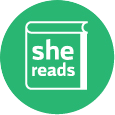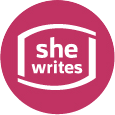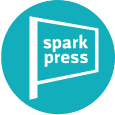- Alle C. Hall
- CreateSpace verifies that I am still relevant

I was a little worried that I wasn't. I am so brilliant, yes; but much of my insider information comes from the six years I spent running The Hugo House InPrint series. This was 2001-2007. Our monthly panel of agents and editors often debated whether or not Web publications counted as "real," and if a writer needed to blog. Meet the Flintstones
On Dec. 7th, I attended a two-hour, soft-sell commercial for Amazon's CreateSpace. Sponsored by the same, the free event ("Pitch 2.0") purported to be about marketing your book in the age of technology. There are a lot of similarly themed panels around.
(Best title I've heard so far; Creative Nonfictions's "WTF: Writing Toward the Future.")
CreateSpace scored poinst by avoiding in their title the phrase "marketing your book in the modern age," or the words "electronic media" or "self-publishing."
Which was what it was all about.
"Pitch 2.0" refers to expanding what they call Pitch 1.0 (the classic pitch, the elevator speech, 25 words or less to describe the project) into Pitch 2.0 (for retailers, reviewers, book bloggers; catalogue or jacket copy, or e-book description).
In other words, pitch is the new pitch.
So, I saved you about two hours of listening to how e-commerce has not really changed an author's basic role in book-selling. What has changed is an author's the ability to:
- Have more readers find your book, from in the comfort of your own pajamas;
- Circumvent some rejection from agents and publishing houses; and
- Self-publish without obliterating your bank account or literary reputation.
One panelist, editor Alan Rinzler (pictured above; a good man to hear speak to issues in publishing), spoke of self-publishing as "a wonderful new way that gives a lot of power to authors."
CreateSpace would love you to agree with Rinzler. I do. If I were going to self-publish, I would certainly consider CreateSpace. And not just because his discovery, Toni Morrison's The Bluest Eye, is possibly the most meaningful book I have ever read.
Writing Status Badges












Writing Status Badges












Featured Members (7)
Writing Status Badges





















